Austin clinic sets up one-stop treatment space for people with ALS
Last June, Jenna Bert started to feel some weakness in her left hand. Then she had pain all over her body. Doctors first thought she had a pinched nerve in her neck and sent her to a neurologist. After three months of waiting to get in to see that neurologist, Bert just remembers that doctor saying about her symptoms, "Huh, that's not right."
"You're not supposed to say that out loud," Bert remembers thinking. "She was stumped."
Bert's weakness was expanding to other extremities. Almost every two weeks, she would lose another ability, she said.
Bert's journey into the world of amyotrophic lateral sclerosis, also known as Lou Gehrig's disease, brought her to the Austin Neuromuscular Center and its ALS Clinic.
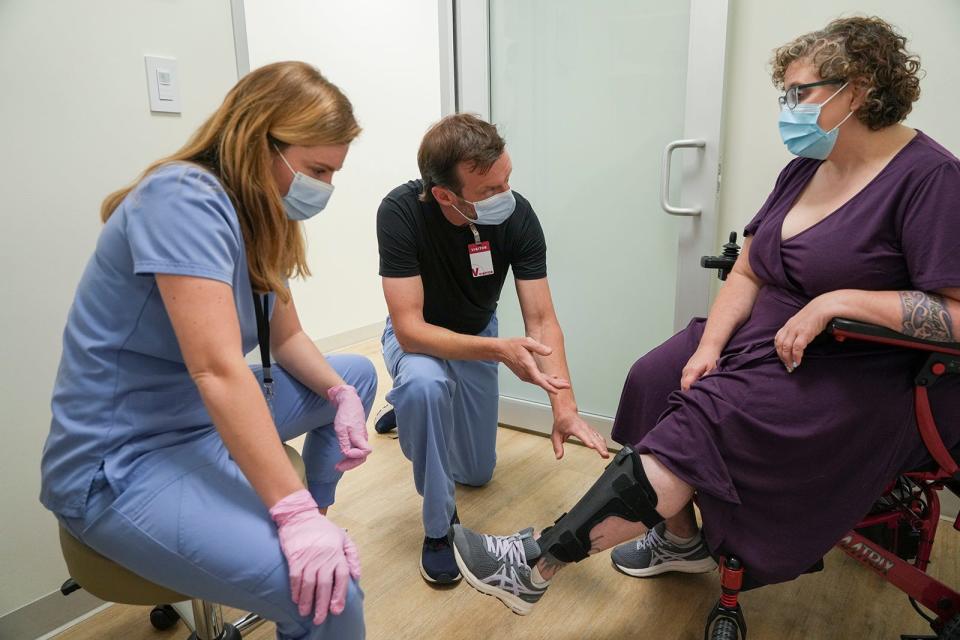
The clinic puts all the resources people with ALS need into the same space two Tuesday afternoons a month, instead of having them go to multiple medical offices for care.
Patients see Dr. Yessar Hussain, who specializes in neuromuscular disease, as well as nurse practitioner Casey Kafena. They also see occupational, physical and respiratory therapists as well as nutritionists, social workers, speech language pathologists, and representatives for adaptive mobility machines such as specialized wheelchairs and communication devices.
"I love how it supports you," Bert said.
She sits in her patient room, and one by one the providers come to her. She lives in Bastrop, and it would be difficult to get to all the providers she needs to see without the clinic.
Hussain said clinics like this have an impact on the quality of a patient's life and extending that life. Ultimately, though, ALS is a disease from which people do not recover.
The clinic has helped Bert, 52, manage her symptoms as well as mentally prepare for what's ahead.
Another path: After ALS diagnosis, Austin marathoner finishes London race in wheelchair
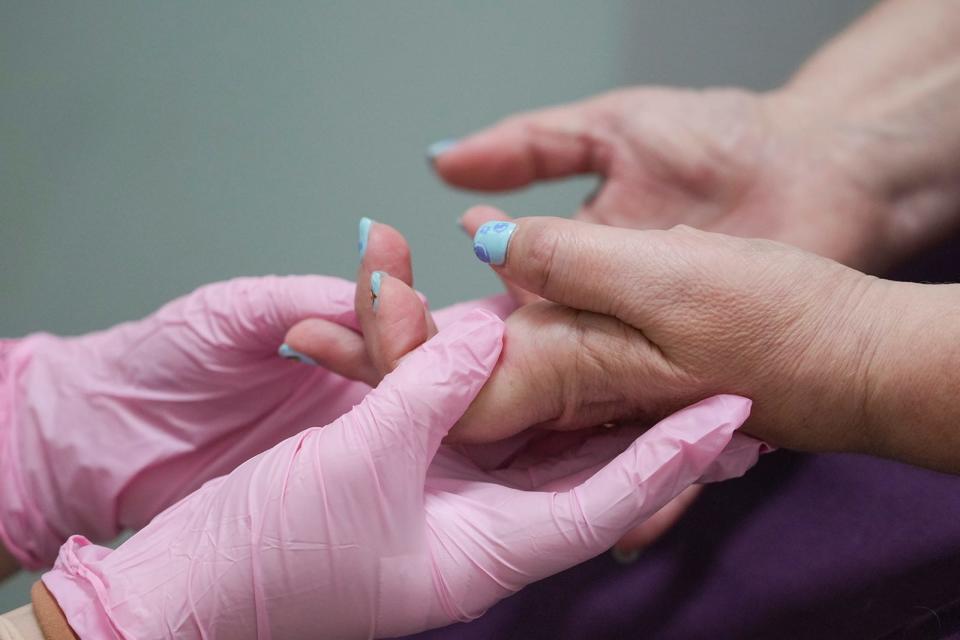
What causes ALS?
ALS is a progressive neurodegenerative disease that causes nerve cells in the brain and spinal cord to die. The main symptom is muscle weakness, which can affect walking, swallowing, talking and breathing.
The cause is not known, though 10% of cases are genetic. There has been some link to athletes in sports such as soccer, football and boxing, where there are chronic head injuries.
ALS affects men and women almost equally, and most people are diagnosed in their 50s and 60s, though people can be diagnosed as early as their mid-20s and as late as their 80s, Hussain said. About 5,000 people a year are diagnosed with ALS in the United States.
Life expectancy is typically five to six years after diagnosis.
"All you can do is reassure them you are on their side," Hussain. Then the clinic providers get to work on quality of life and removing barriers such as fighting with insurance companies and accessing helpful devices.
More: FDA approves first-of-a-kind drug for a rare form of Lou Gehrig's disease
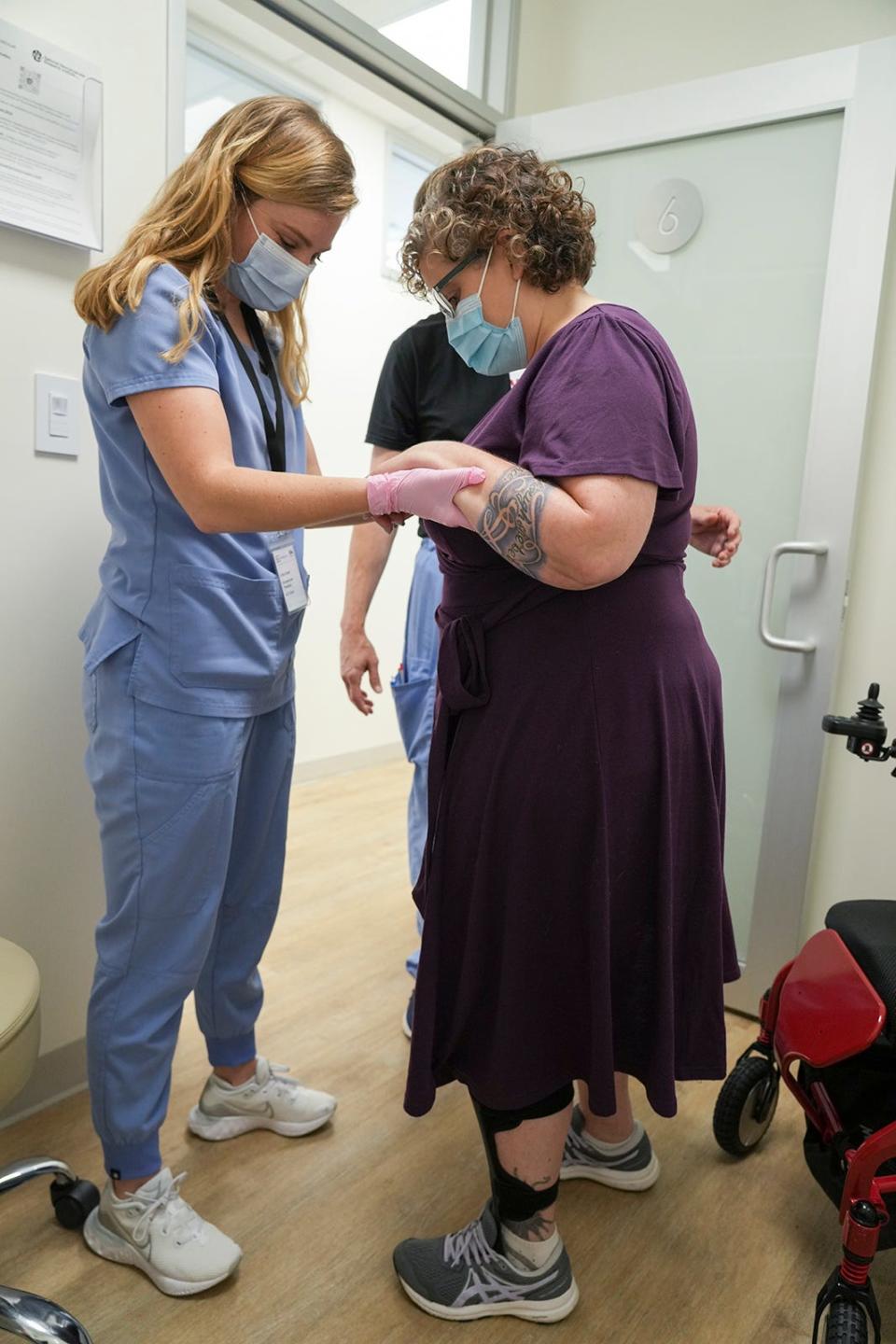
How are people diagnosed with ALS?
For the 10% of patients who have the genetic form of ALS, it's diagnosed by a blood test.
Bert started attending the clinic in December, at first to get her diagnosis, and then to get services.
"Dr. Hussain is compassionate," she said, but he's also matter-of-fact. "He knows he's telling you something horrible."
How to pick a Medicare plan: Some advice from Austin-area experts
What are the treatments for ALS?
ALS has been about symptom management. Some new medications have been approved by the U.S. Food and Drug Administration, but only one has shown to delay progression by three to six months.
One of the newer medications that has shown promise is only for genetic ALS. Tofersen, sold under the brand name Qalsody, was approved April 26 by the FDA. Other medications are in clinical trials, and the Austin Neuromuscular Center participates in some of them. Bert hopes to enter a new clinical trial with a medication she's already taking.
Living with ALS
When Bert visits the clinic in April, she is rocking her new red lightweight wheelchair, which she can control with a joystick on the arm of the chair. The clinic helped her choose the right chair, as well as sort out whether to use her insurance to cover it.
Eventually, she'll need a more complex wheelchair that could cost $20,000, and a social worker advised that her insurance would cover only one wheelchair. She wouldn't want to waste her benefit on the less expensive model she uses now. That's the kind of thoughtful problem-solving the clinic helps patients work through.
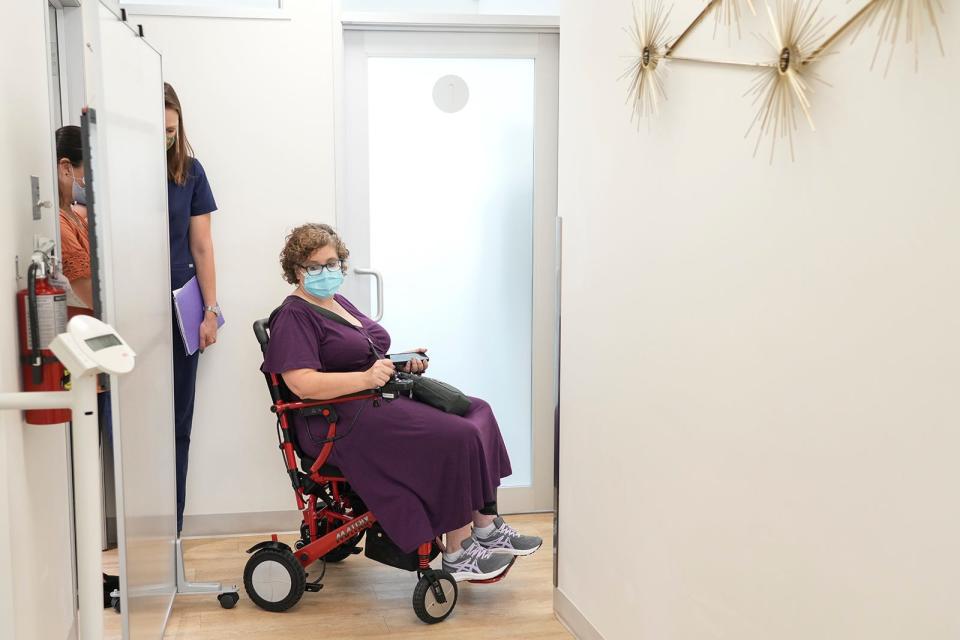
At the clinic, a respiratory therapist checks Bert's breathing. A physical therapist works with her on a new brace for the most affected leg. The physical therapists also have taught Bert how to do exercises at home. Each day, she practices getting up and out of her chair more than 50 times. She works with straps and hand weights to retain some strength.
The tattoo on her arm has a quote from Shakespeare: "And though she be but little, she be fierce."
"If I don't know how I'm going to do it, ‘Just read your arm,’” she reminds herself.
The clinic has helped her make other arrangements, like obtaining Social Security disability payments, making her bathroom more accessible and make legal arrangements.
"It's so much," she said. "I had to get an estate attorney at 52 years old. We're talking about planning my death and my money. It's something we should all do, but who wants to?"
Bert, who spent decades working with people with HIV and AIDS in Baltimore, learned from that experience. She developed a dark sense of humor, but also a different way of thinking about life.
"Every day, you can either laugh or cry," she said. "You have to just keep living for today and what you can do today," she said. "And you keep preparing for what's coming."
How I scaled Patagonia with ALS: 'The right wheelchair will take you anywhere a pair of legs can'
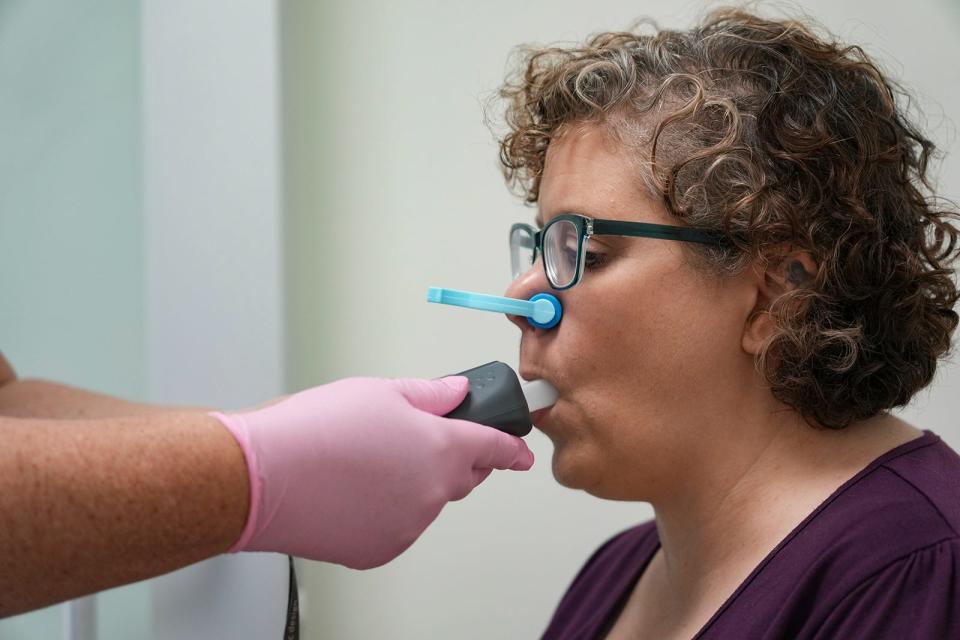
She wants some simple things: To spend time with friends and family; to enjoy her dogs, Ita and Zero, and cats, Betty and Quorra; and to sit on her back porch and watch the woods around her.
Her biggest worry is for her husband, Woody. They met through a Facebook dating app after she moved to Austin in 2019 and married in October 2021.
"I think about what he's going to go through," she said. "We just found each other."
Bert and her husband are planning to hit the road and travel while she can. They've already been to New Orleans. Next stops are Nashville, Memphis and Cleveland to complete their music tour. They'll go to Galveston to be on the beach, and she wants to go to "The Wizarding World of Harry Potter" in Orlando, Fla.
"Everybody has the things they want to do in their lives, or that they hope they get to go do," she said. "Now is the time."
This article originally appeared on Austin American-Statesman: Austin Neuromuscular Center's ALS clinic brings together specialists

